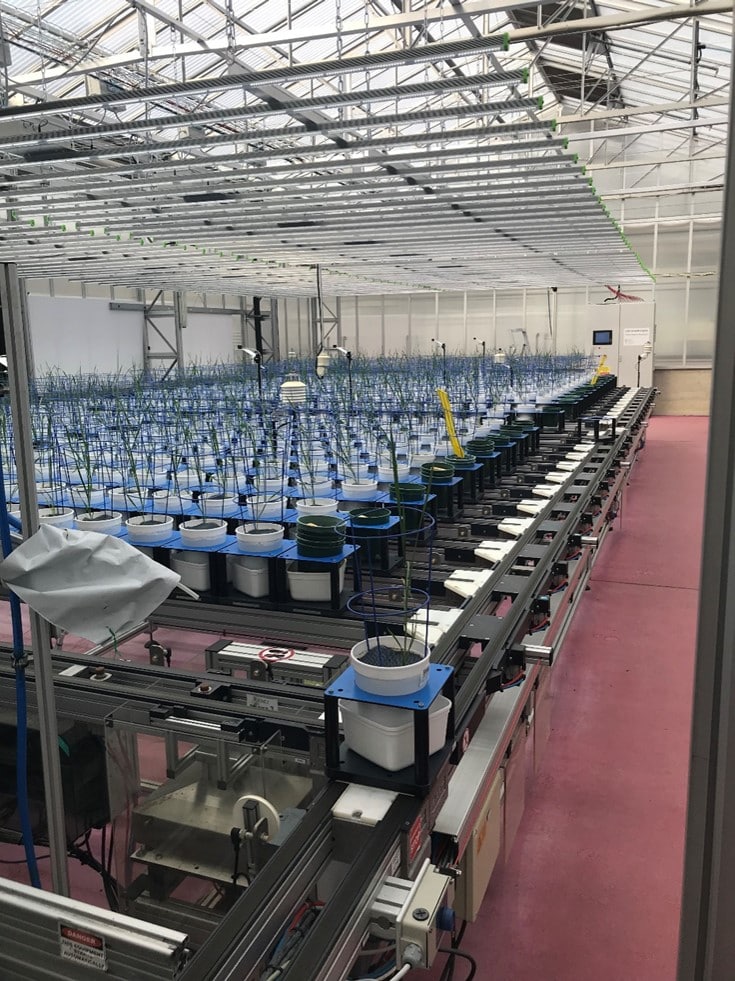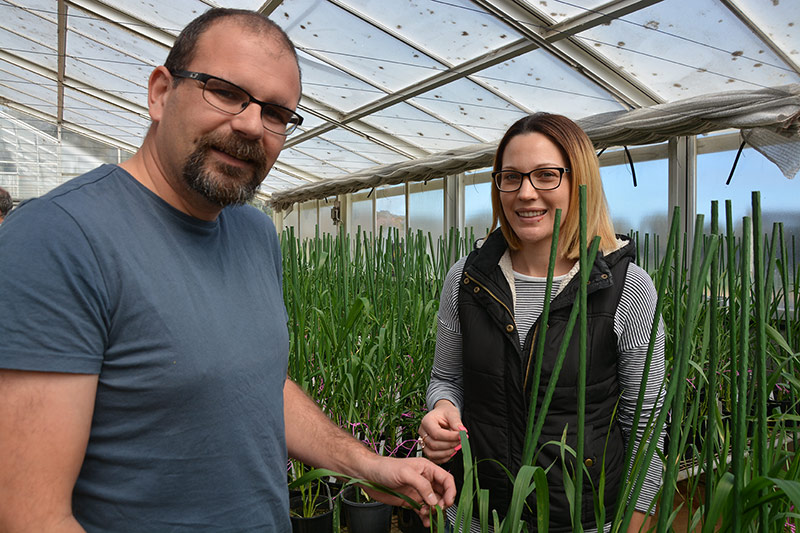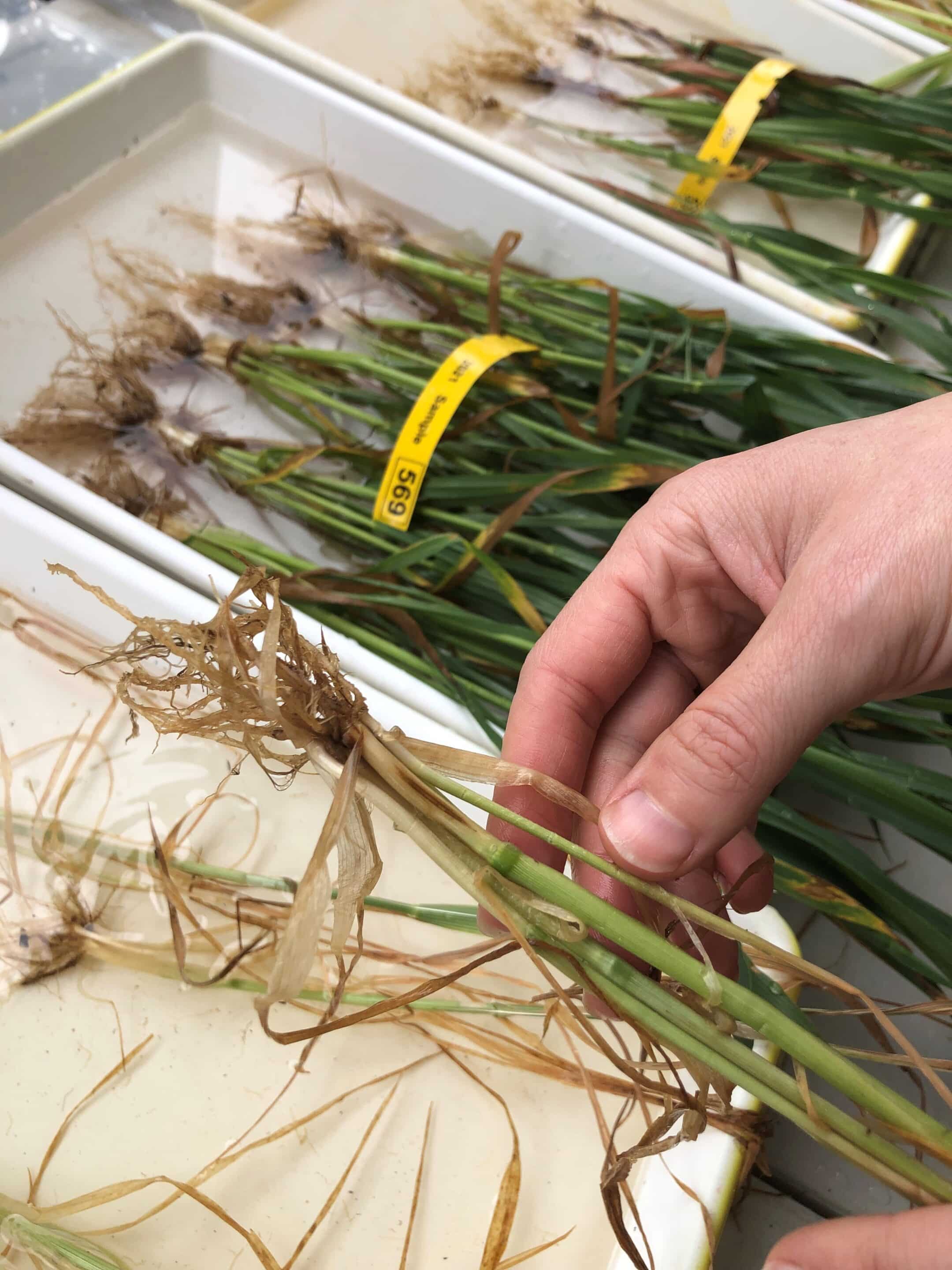START
FINISH

Summary
Salinity is estimated to cost the Australian grain industry up to $1.3 billion in lost yields per season. Breeding salt tolerant grains will help close this yield gap and improve the resilience of South Australian grain harvests.
This project aimed to identify genetic loci (quantitative trait loci, QTL) in the high sodium accumulating (and therefore salt-tolerant) wheat landrace Mocho de Espiga Branca. Identifying QTL linked to salt tolerance will allow researchers to mark hereditable genes and select for them in breeding programs design to develop elite Australian wheat cultivars for South Australian conditions.
Background
Up to 50 per cent of South Australian cropping land can be affected by transient soil salinity. Mocho de Espiga Branca is a high sodium accumulating wheat landrace, offering opportunities to introduce novel salinity tolerance mechanisms into Australian wheat cultivars. The mechanisms and genes behind Mocho de Espiga Branca’s ability to tolerate high accumulations of sodium need to be identified before marker-assisted selection can be used to introduce them into Australian breeding programs.
Research Aims
The core objectives of the project were to:
- Identify the mechanisms behind salinity tolerance in a SAGIT-funded bread wheat mapping population of Mocho de Espiga Branca andGladius (‘Mocho x Gladius’)
- Identify regions of the plant’s DNA that underpin these salinity tolerance traits, so they can be used to select lines for evaluation in saline tolerant wheat breeding programs.
- Generate wheat lines containing either the salt tolerant or salt sensitive genetic region for future field evaluations.
In The Field
A Mocho x Gladius recombinant inbred line (RIL) was grown under both control and salt stressed conditions at the Australian Plant Phenomics Facility, The Plant Accelerator, and measured for 37 phenotypic traits including plant biomass, plant growth, ion content and grain production.
Plants were grown using both traditional greenhouse and Smarthouse conditions in a partially duplicated line to minimise special effects in either the greenhouse or the Smarthouse.
The plants were automatically watered to maintain a water soil content of 17 per cent water by weight and treated with either 0 or 150 mm of NaCl salt at 4th leaf emergence (19 days after planting).
Using genetic mapping developed through SAGIT project UA317, 465 performance-related genetic loci (237 under salt stress and 228 under control conditions) were linked to plant growth in saline soils; sodium, potassium or chloride accumulation in leaves; plant biomass; water use efficiency; and yield.
Under saline conditions, 177 loci were identified as being linked to the differences in the performance of Mocho de Espiga Branca and Gladius, with a further 60 loci identified as being linked to differences in salt tolerance between the cultivars.
Genotyping was supported by funding from the Yitpi Foundation.
Results
Genetic loci linked to 29 of the 37 desirable phenotypic traits under saline stress were found to be hereditable and therefore offer potential for plant breeding programs.
A single genetic mutation in the gene governing sodium transport through the plant was found to result in high sodium concentrations in the leaves of plants with the Mocho de Espiga Branca version of the gene. Exactly how plants carrying this gene survive such high sodium levels is still under investigation.
Differences in flowering time between Mocho and Gladius initially make evaluating the yield performance of the population in the field difficult. Seed has since been selected for more consistent flowering times and is being multiplied for field trials under saline conditions in 2021 as part of SAGIT project UA419.
Project Participants
University of Adelaide: Dr Allison Pearson, Associate Professor Stuart Roy, Dr Takashi Okamoto, Dr Jessey George, Dr Julian Taylor
The Problem
Salinity is estimated to cost the Australian grain industry up to $1.3 billion in lost yields per season.
The research
Breeding salt tolerant grains will help close this yield gap and improve the resilience of South Australian grain harvests.
More information
A/Prof Stuart Roy, University of Adelaide
T: 08 8313 0549
E: [email protected]
Value for Growers
Mocho de Espiga Branca appears to offer South Australian wheat growers a novel source of genetic diversity for saline tolerance as well as other abiotic and biotic stress tolerance mechanisms.
Having identified the genetic loci of these traits, analysis of field trial results will confirm their hereditability under South Australian conditions. This information will guide ongoing breeding activity and should lead to the introduction of novel salt tolerance traits into elite Australian wheat cultivars.
This genetic research is also being used to inform projects to improve the saline tolerance of barley in the South Australian environment.
Latest Research Projects




